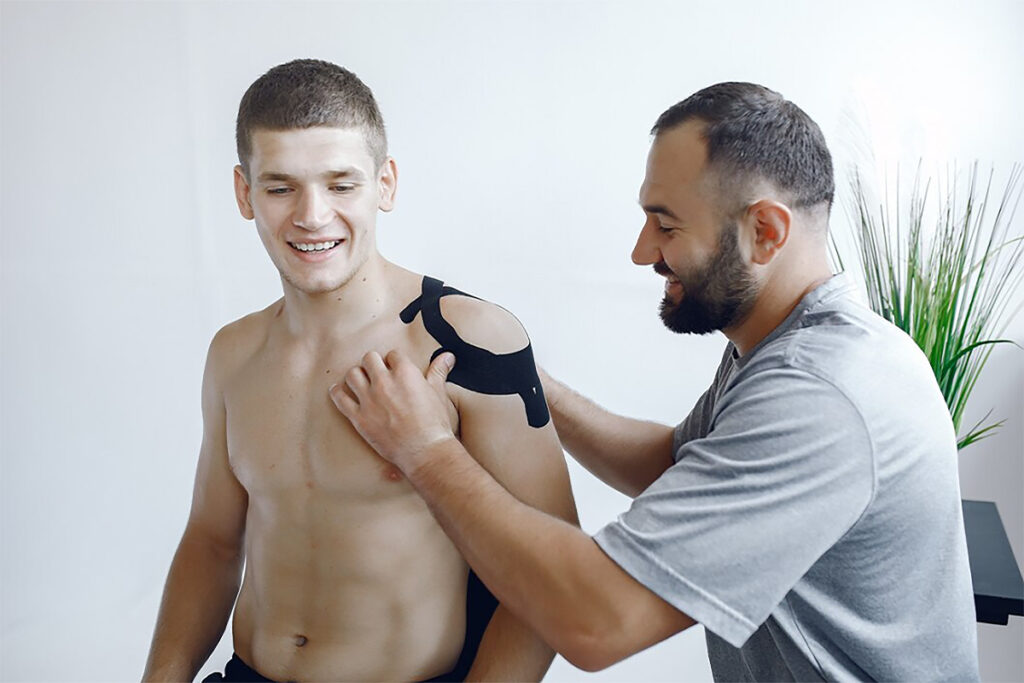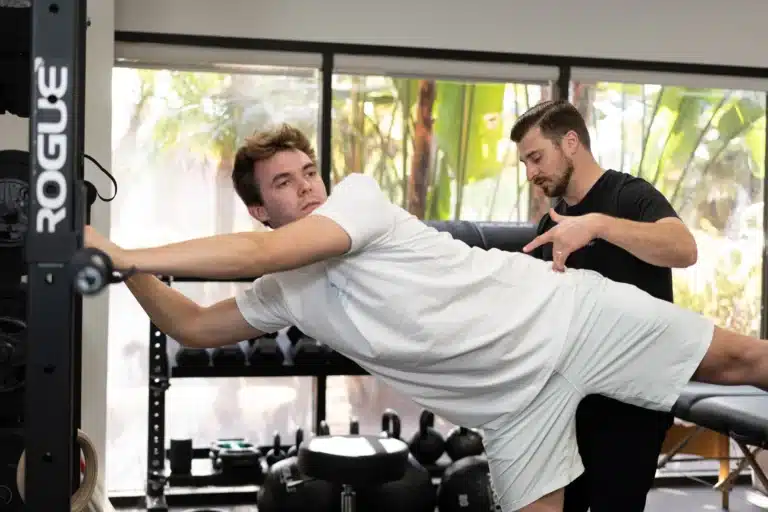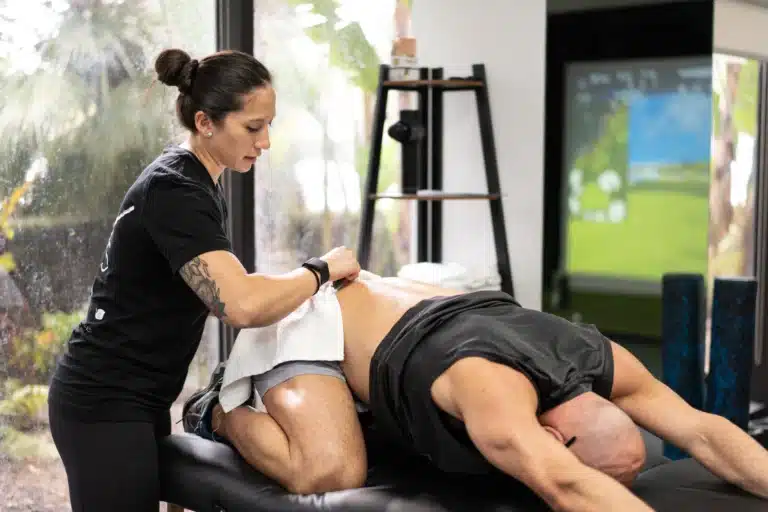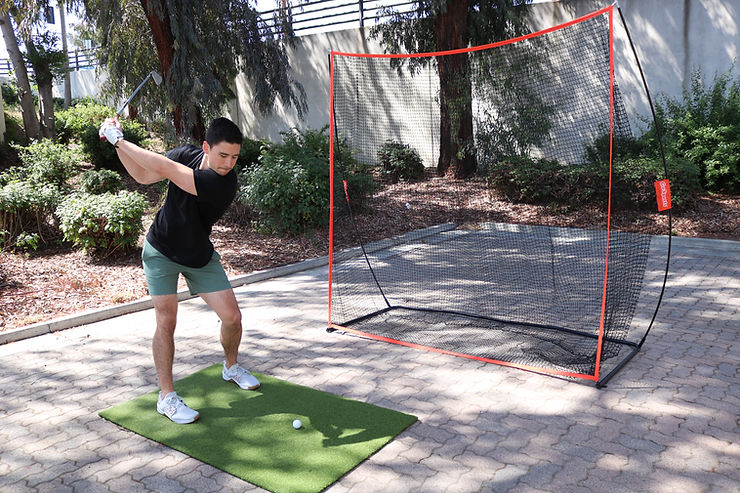Introduction
CrossFit stands as a testament to the pursuit of peak physical fitness, attracting individuals from diverse backgrounds to its high-intensity workouts. While renowned for its community-driven approach and challenging routines, the demanding nature of CrossFit exercises poses a risk of CrossFit shoulder injury, which can significantly impede progress and daily activities. Hence, awareness and proper management are essential for every CrossFit enthusiast.
Developed in the early 2000s, CrossFit has evolved into a global phenomenon, offering a dynamic and effective approach to fitness. Unlike traditional gym workouts focusing on isolated exercises, CrossFit emphasizes functional movements performed at high intensity. Inspired by disciplines such as gymnastics, weightlifting, and running, these movements aim to enhance physical strength, flexibility, and cardiovascular health.
The popularity of CrossFit is further fueled by its measurable results and competitive opportunities, notably the CrossFit Games, showcasing peak fitness and skill levels. However, the intensity and complexity of CrossFit exercise inherently carry a risk of injury, particularly to areas like the shoulders, which are important for many movements.
According to research, 23.5% of people reported experiencing a CrossFit shoulder injury during training in six months. This statistic underscores the importance of understanding risks, implementing preventive measures, and adhering to proper shoulder pain rehab strategies for a safe and sustainable practice.
Types of Shoulder Injuries Common in CrossFit
CrossFit’s diverse range of activities puts participants at risk for shoulder injuries. Understanding these common injuries and their symptoms is the first step toward prevention and effective recovery.
Rotator Cuff Injuries
The rotator cuff, a group of muscles and tendons that stabilize the shoulder, is highly susceptible to rotator cuff tears and other injuries from CrossFit due to repetitive overhead arm movements.
Shoulder Impingement Syndrome
Shoulder Impingement Syndrome, often called subacromial impingement, occurs when the shoulder muscles are pinched between the bones of the shoulder area, a common issue resulting from repetitive overhead position exercises.
SLAP Tear (Superior Labrum from Anterior to Posterior Tear)
A SLAP tear involves damage to the ring of cartilage surrounding the shoulder socket, commonly caused by repetitive overhead lifting or heavy lifting.
AC Joint Injury (Acromioclavicular Joint Injury)
The AC joint, where the collarbone meets the shoulder blade, can be injured through direct impact or repetitive strain, leading to pain at the top of the shoulder, swelling, and difficulty lifting the arm across the body.
Frozen Shoulder (Adhesive Capsulitis)
Characterized by stiffness and pain in the shoulder joint, a frozen shoulder may develop from lack of activity or after an injury.
The Signs And Symptoms Of A Shoulder Injury
When participating in CrossFit, the intensity and wide range of movements can put additional stress on the shoulders. Recognizing the early signs of injury is crucial for preventing further damage and ensuring a timely and effective recovery process. Here’s a more detailed look at common symptoms associated with shoulder injuries from CrossFit:
Persistent Pain: One of the most common symptoms, persistent pain in the shoulder, may occur both during activity and at rest. It can range from a dull ache to sharp pains when performing specific movements, especially those requiring overhead activities such as lifting.
Swelling and Tenderness: Swelling around the shoulder joint may not always be visible but can be felt as a puffiness or tenderness when touching the area. This is often a sign of inflammation resulting from overuse or acute injury.
Reduced or Limited Range of Motion: Athletes may notice a decreased ability to move the arm in certain directions without pain. This limitation can affect everyday activities, such as reaching overhead, behind the back, or even dressing.
Strength Loss: A noticeable decrease in shoulder strength can be a significant indicator of an underlying injury. This might manifest as difficulty in lifting objects that were previously manageable or a decline in performance during workouts.
Audible Popping or Cracking Noises: Hearing popping, cracking, or grinding sounds when moving the shoulder is not uncommon with shoulder injuries. These sounds may or may not be accompanied by pain.
Instability: The feeling that the shoulder may “give out” or is not as stable as usual can indicate damage to the shoulder’s ligaments or tenderness in the joint, making it less secure during certain movements.
Stiffness: A common symptom of frozen shoulder and other injuries, stiffness in the shoulder joint can severely limit movement quality and may worsen after periods of inactivity, such as waking up in the morning.
Numbness or Tingling: Some shoulder injuries can affect nerves around the shoulder, leading to sensations of numbness, tingling, or “pins and needles” in the arm or hand.
Causes and Risk Factors for Shoulder Injuries in CrossFit

The dynamic and high-intensity nature of CrossFit, while beneficial for physical fitness, also introduces several risk factors for common shoulder injuries. By understanding these causes, athletes can take proactive steps to minimize potential injury risk.
Repetitive Stress
The repetitive nature of CrossFit workouts, especially movements like pull-ups, push-ups, and overhead presses, can place continuous strain on the shoulder joints and muscles, leading to overuse injuries.
Improper Technique
Improper form during exercises significantly increases the risk of shoulder injuries. For example, improper technique in weightlifting or during gymnastic moves can place undue stress on the shoulder, leading to strains or more severe injuries.
Inadequate Warm-up and Flexibility
Skipping warm-up exercises or neglecting flexibility training can lead to a reduced range of motion and increased susceptibility to injuries. Tight muscles are more prone to tears, and stiff joints are less able to absorb the impact of CrossFit’s variety of movements.
Previous Injuries
Individuals with a history of shoulder injuries are at a higher risk of re-injury, especially if they have not fully recovered or if the initial injury was not properly rehabilitated.
Muscle Imbalances
CrossFit requires a balanced development of muscle groups. Discrepancies in strength and flexibility between opposing muscle groups can lead to abnormal movement patterns and increased strain on the shoulder.
High-impact and High-load Exercises
CrossFit workouts often involve high-impact and high-load exercises that can be challenging for the shoulder. Activities such as snatches and kipping pull-ups demand a lot from the shoulder joint, which can lead to injuries if not performed correctly.
Equipment Misuse
Using equipment improperly or choosing the wrong weight can also be a significant risk factor. It’s crucial to use equipment that matches one’s fitness level and to follow proper techniques to avoid injury.
Lack of Supervision
Working out without proper supervision or coaching can lead to unnoticed poor form errors. Certified CrossFit coaches can provide immediate feedback and corrections to minimize the risk of injury.
Preventive Measures
Preventing shoulder injuries in CrossFit is essential for sustaining long-term participation and achieving fitness goals. Here are key strategies to mitigate the risk:
Proper Form and Technique
- Mastering Correct Form: Prioritize learning the correct form for all exercises, especially those involving overhead movements and lifts. Proper technique reduces undue stress on the shoulder joint and muscles, preventing common injuries.
- Continuous Learning: Even experienced athletes can benefit from regular technique reviews. Attend workshops and training sessions to refine your skills.
Regular Strength and Flexibility Training
- Balanced Muscle Development: Engage in exercises that strengthen the rotator cuff and scapular muscles to support shoulder stability. Balanced muscle development helps prevent imbalances that could lead to injury.
- Flexibility and Mobility Work: Incorporate stretching and mobility exercises into your routine to maintain a full range of motion in the shoulders. Yoga and Pilates can complement CrossFit training by enhancing flexibility.
The Movement Schopp’s Service in CrossFit Rehab
The Movement Schopp excels in providing targeted physical therapy in CrossFit, focusing on the specific challenges and injuries associated with CrossFit training. Their expert physical therapists specialize in diagnosing and treating common CrossFit-related injuries, employing a mix of manual therapy, exercise, and mobility techniques to facilitate recovery, enhance performance, and reduce pain.
They offer personalized shoulder pain rehab programs tailored to each athlete’s unique needs, ensuring a safe and effective return to CrossFit by gradually rebuilding strength, flexibility, and conditioning. Additionally, The Movement Schopp emphasizes education on safe CrossFit practices, teaching athletes proper techniques and preventive strategies to avoid overuse injuries, thereby promoting smarter and safer training methods. This comprehensive approach ensures athletes can continue their CrossFit journey with confidence and reduced risk of future injuries.
Rehabilitation Strategies
Effective rehabilitation is crucial for recovering from CrossFit-related shoulder injuries. A structured, phased approach ensures that healing is optimized, preventing re-injury and facilitating a safe return to CrossFit activities.
Phase 1: Acute Phase Rehabilitation
- Rest and Inflammation Management: Initially, rest is paramount to reduce further injury and inflammation. Avoid activities that worsen shoulder pain, apply ice to manage swelling, and consult a healthcare professional for appropriate anti-inflammatory medications if necessary.
- Pain Management Techniques: Techniques such as cold compression therapy, electrical stimulation, or gentle massage can be employed to relieve pain. It’s important to follow a healthcare professional’s advice to avoid aggravating the injury.
- Gentle Mobility Exercises: Begin with gentle, non-weight bearing mobility exercises to maintain range of motion without stressing the injured tissues. Examples include pendulum exercises, and passive arm lifts with the support of the unaffected arm.
Phase 2: Recovery Phase Rehabilitation
- Gradual Strengthening Exercises: As pain decreases, introduce light strengthening exercises focusing on the rotator cuff and scapular stabilizers. Use resistance bands or light weights, ensuring no exercise induces pain.
- Flexibility and Range of Motion Exercises: Incorporate stretching exercises to restore flexibility and range of motion. Stretches should be gentle, avoiding any movements that provoke pain.
- Proprioception and Stabilization Training: Exercises that improve shoulder joint proprioception (sense of joint position) and stabilization are crucial. This can include exercises on unstable surfaces or with dynamic movements to challenge the shoulder’s stability gently.
Phase 3: Functional Training and Return to Sport
- Sport-specific Exercises: Gradually reintroduce CrossFit-specific exercises, starting with low intensity and volume. Focus on technique and ensure each movement is performed without pain before increasing intensity.
- Progressive Loading and Resistance Training: Slowly increase the load and resistance in simple exercises to build strength. This phase should be carefully monitored to avoid overloading the healing tissues.
- Technique Refinement and Preventive Strategies: Continue to refine exercise techniques and incorporate preventive strategies learned during rehabilitation. This includes ongoing strength and flexibility training, as well as adjustments to workout routines to avoid future injuries.
Special Considerations for CrossFit Athletes
Recovering from a CrossFit shoulder injury requires athletes to make specific adjustments to their training regimen. These modifications help accommodate the healing process and prevent further injuries, ensuring a smooth and safe return to physical activity.
Modifying Workouts To Accommodate Injury Recovery
- Scale Down Intensity: Initially, reduce the intensity of workouts to avoid putting excessive strain on the injured shoulder. This may involve lowering weights, reducing repetitive motion, or avoiding certain high-risk exercises.
- Substitute Exercises: Replace exercises that worsen shoulder pain with alternatives that achieve similar fitness goals without stressing the injury. For instance, modify overhead movements with front squats or use a stationary bike instead of rowing.
- Focus on Lower Body and Core: Utilize the recovery period to strengthen the lower body and core, which are essential for overall fitness and can be trained without impacting the shoulder.
Modifications in Training Routines and Equipment to Prevent Future Injuries
- Incorporate Rest Days: Ensure adequate rest days are part of the training routine to allow for muscle recovery and prevent overuse injuries.
- Use Protective Gear: Consider using supportive braces or wraps specifically designed for shoulder stability during workouts as you transition back to full activity.
- Adjust Equipment Settings: Fine-tune equipment settings, such as the height of the pull-up bar or the grip width on the barbell, to accommodate a comfortable range of motion and reduce strain on the shoulder.
- Personalized Coaching: Work closely with coaches to adapt workouts to your recovery stage. Personalized coaching can offer tailored advice and adjustments to ensure exercises are performed safely and effectively.
Communication With Coaches And Healthcare Professionals
Effective communication between CrossFit athletes, their coaches, and healthcare professionals is a critical component of a successful rehabilitation process and a safe return to sport. This collaborative approach ensures that all parties are aligned on the athlete’s recovery status, capabilities, and limitations, facilitating a tailored rehabilitation, effective treatment plan, and training program that addresses the specific needs and goals of the athlete.
Conclusion
In conclusion, while shoulder injuries are common among CrossFit athletes due to the demanding nature of the workouts, particularly those involving overhead movements and heavy lifting, it’s important to address the question: Is CrossFit bad for you? The answer largely depends on the approach taken towards training and injury prevention.
Recognizing the signs and symptoms of shoulder injuries, understanding the causes, and implementing preventive measures are crucial steps in promoting safe and sustainable participation in CrossFit. Effective rehabilitation strategies, including personalized coaching and specialized rehabilitation services, play a pivotal role in facilitating a safe return to full activity.
By prioritizing proper form, balanced muscle development, and open communication with healthcare professionals and coaches, CrossFit enthusiasts can minimize the risk of shoulder injuries.
FAQs
How long does a damaged shoulder take to heal?
The healing time for a shoulder injury varies depending on the severity of the injury, the specific diagnosis, and the individual’s compliance with their rehabilitation program. Generally, minor injuries may heal within a few weeks, while more severe injuries could take several months.
Is it OK to workout with a hurt shoulder?
It’s essential to consult a healthcare professional before continuing to workout with a shoulder injury. In many cases, activity modification or alternative exercises that do not stress the injured shoulder can be safely performed.
Can I train biceps with a shoulder injury?
Training biceps with a shoulder injury may be possible if the exercises do not worsen shoulder pain or compromise the healing process. It’s crucial to get guidance from a healthcare professional or a qualified coach to ensure that any alternative form of exercise performed is safe and appropriate for your specific condition.




